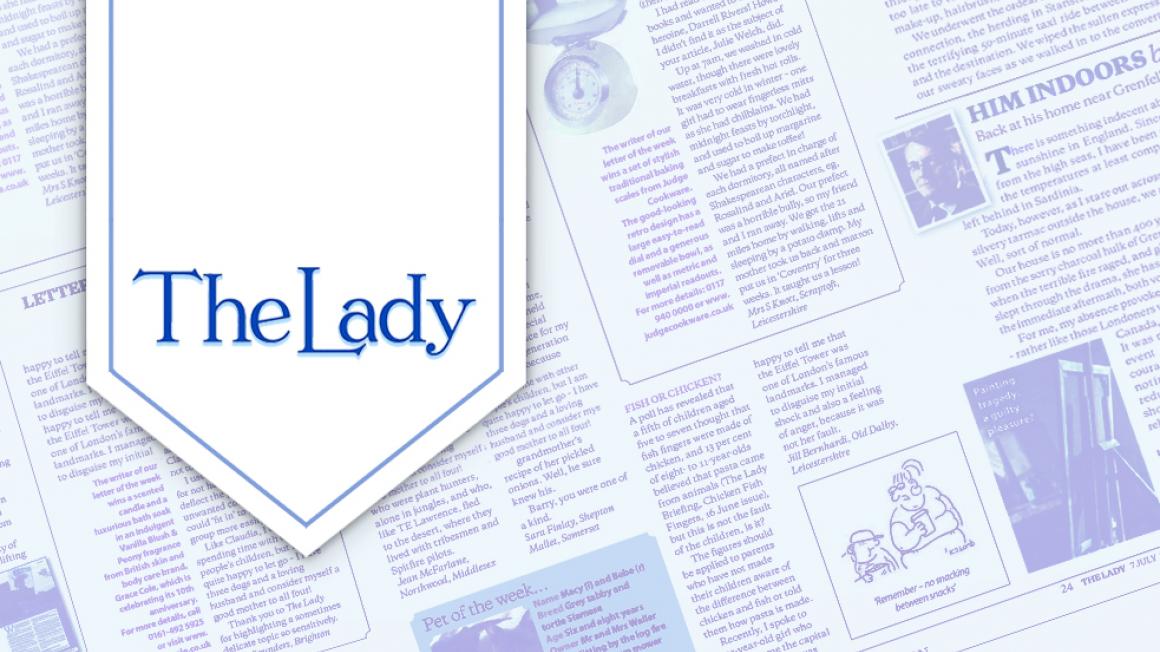The Lady Guide to Modern Manners: 22 January
I was somewhat stunned to receive an email last week that began: ‘Hey, Annie’. Isn’t this rather familiar from someone who doesn’t know me? I have no idea how to reply.
Annie Bailey, Bangor
Dear Annie,
It sounds as if the email came from America. In the electronic age, cultures and customs are jumbled up as never before and often we don’t know where we are. A British person probably wouldn’t begin an email, let alone a handwritten letter, with ‘Hey’ but they might choose ‘Hi’ or ‘Hiya’. ‘Hey’, in particular, sounds aggressive, as in the more common usage over here, ‘Hey, what do you think you’re doing?’ – ie, we say ‘Hey’ to arrest someone’s attention and as a prelude, usually, to some kind of reprimand. But in America ‘Hey’ is a normal sort of greeting.
Then there is also confusion as to exactly what an email is – whether a letter, a memo or even a ‘chat’. Just how formal or informal? Well, the answer here is straightforward. It depends what the email is about and who is sending it and to whom. It’s a highly flexible form of communication. A formal email, perhaps from a professional advisor, beginning ‘Dear…’ might lead to an exchange of ‘chat’ without any greeting at all, as in a real conversation. If professionals want to send less formal emails to their clients, they might begin, ‘Good morning’ or ‘Good afternoon’.
I find it hard to get greatly exercised about ‘Hi’ or ‘Hiya’ or even ‘Hey’ as an email opener but many do. It’s only wrong if the context is wrong – if someone is writing to a remote acquaintance to ask for a charity donation or a job reference, for instance. In fact I would go further and say, it’s really rather mean and stuffy to complain about informal greetings: people writing ‘Hi’ or ‘Hey’ don’t intend to be rude. They think they’re being friendly. Besides, the practice is now so ubiquitous it would be hopeless to attempt to stop it. I liked Ann Widdecombe’s solution, which she gave in her series of etiquette talks on lunchtime Radio 4 in the first week of January: ‘If someone writes to me, “Hi, Ann” I write back, “Hi, whoever they are…”‘
My own variation on this is that I answer ‘Hi’ with ‘Hello’. Call me old-fashioned, but I’ve never said or written ‘Hi’ in my life. I’m just not a ‘Hi’ kind of person. I hope my recipients understand. Be prepared also to change the greeting as the email exchange continues. If you run a business, you might start off with a series of ‘Hi’ emails but if your correspondent decides to actually buy something from you, you’ll probably want to send a more formal confirmation beginning ‘Dear…’
Please send your questions to thomas.blaikie@lady.co.uk or write to him at The Lady, 39-40 Bedford Street, London WC2E 9ER
WHAT TO DO ABOUT… food on boards
My long-time correspondent, Ian Williams of Usk, writes to complain. Many restaurants, in quest of novelty, have dispensed with the long tradition of plates, ideally of porcelain but pottery will do at a pinch. Instead they offer food on wooden boards, possibly recycled cheeseboards or chopping boards. Slates, sometimes with jagged edges, can also be deployed. I also have to point out the practice of certain dishes coming in a Kilner jar, with lid, or a jam jar without. Sometimes the jar is on a board.At our own dear Treby Arms in Sparkwell, Devon, my mother was disconcerted by the pudding-in-a-jar phenomenon, although not as much as by the pudding-in-a-flowerpot. The jars are at least practical and thrifty – much less pricey than Meissen presumably. But the slates and boards… the whole point about a plate is that it has a rim. Juices and sauces do not drip all over one’s clothes as happened to me with a trio of rhubarb desserts (very gourmet). Rhubarb, it turns out, has a bleaching quality and has left two pale marks on my good bone slacks.


